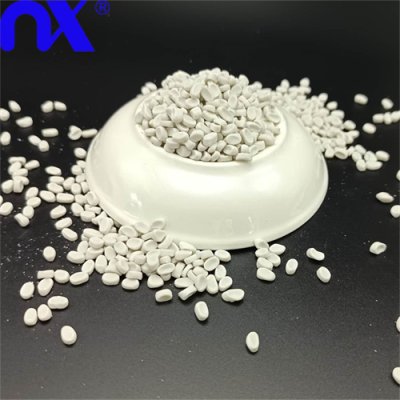Advanced Plastic Processing Techniques: Spotlight on Desiccant Masterbatch
1. Traditional Methods of Plastic Drying
Moisture in plastic raw materials, especially hygroscopic ones like PET, nylon, or recycled pellets—has long plagued manufacturers. Before processing, many rely on pre-drying methods:
Hot air dryers: Circulate warm air through hoppers and bins.
Desiccant dryers: Absorb moisture through desiccant to deal with moisture problems.
Vacuum dryers: Lower vapor pressure to remove water speedily.
Despite their common use, each method comes with significant drawbacks. Hot-air systems consume large amounts of electricity and require long drying cycles. Desiccant systems demand frequent regeneration and high operational overhead. Vacuum systems, while efficient, often require specialized equipment and additional floor space.
Moreover, any moisture that remains can still result in production issues like bubbles, poor inter-layer adhesion, or surface finish defects. As manufacturing shifts toward sustainability, energy saving, and lean production, the demand for smarter drying alternatives grows stronger.
2. What Is a Desiccant Masterbatch?
This is where desiccant masterbatch comes in—a trailblazing solution that blends moisture-absorbent materials directly with plastic resin, eliminating the need for separate drying steps.
This masterbatch typically contains:
Calcium oxide (CaO) or other high-affinity drying agents
A polymer carrier such as PE/PP
Optionally, stabilizers or flow modifiers
By blending just 1–5% into the resin, the desiccant absorbs moisture during the melting process, making it particularly useful in extrusion, injection molding, and blown film lines.
Key benefits include:
Simplified workflow — just feed into the hopper, no pre-drying required.
Energy savings — no heated air or vacuum systems needed.
Higher adaptability — works well with both virgin and recycled materials.
3. The Science Behind Moisture Control
Moisture disrupts polymer processing in several ways:
Hydrolysis: Water breaks polymer chains during the melt, reducing tensile strength and blaze resistance.
Steam defects: Entrapped water converts into vapor, causing bubbles or weak spots in films.
Surface distortion: Film clarity diminishes, and injection-molded parts exhibit streaking or silver marks.
The desiccant masterbatch approach tackles moisture in situ. Calcium oxide reacts with H₂O to form calcium hydroxide—a stable compound that virtually removes the water before it causes damage. This internal drying method maintains stable process conditions without the need for additional equipment or steps.
4. Comparative Overview
| Feature | Traditional Drying | Desiccant Masterbatch |
|---|---|---|
| Equipment | High-cost and bulky | Added to resin directly |
| Energy Use | High (heating required) | Low (reaction-based) |
| Maintenance | Frequent | Minimal |
| Drying Time | 30 min to hours | 0 (instant in melt) |
| Recycled Resin Support | Moderate | Excellent |
| Operational Complexity | High setup complexity | Plug-and-play simplicity |
5. Enhancing Recycled Plastic Production
Recycled materials often come with variable moisture levels—drying them traditionally can be inefficient and inconsistent.
Desiccant masterbatch offers:
Fast, on-the-fly moisture correction in melt
Enhanced film clarity in blown film applications
Stable extrusion of thin films and cast sheets
Improved mechanical strength in molded parts
In fast-paced production lines that rely on recycled HDPE or LDPE, this method significantly reduces defects and idle time—especially valuable in packaging, tarpaulin, or agricultural film production.
6. Core Benefits of Desiccant Masterbatch
No pre-drying needed — Simplify operations and save energy.
Superior product quality — Prevent bubbles, cracks, and color ignoring.
Consistent performance — Less scrap, less downtime.
Versatile — Suitable for extrusion, injection, and film tasks.
Sustainability-powered — Promote recycled plastic use with fewer defects and higher output.
Small footprint — Eliminates bulky drying equipment.
Cost-efficient — Only a small addition yields significant savings.
7. Integrating into Production Lines
Adopting desiccant masterbatch is straightforward:
Test resin moisture — Use quick moisture analyzers.
Choose the right grade — Based on CaO content, carrier resin, and melt index.
Blend during feeding — Use existing gravimetric or volumetric feeders.
Monitor run — No changes to extrusion temperature or dwell time needed.
Adjust dosage as needed — Slight adjustments (±1%) to fine-tune moisture control.
The minimal operational adjustment means production teams can embrace this improvement without retraining or equipment overhaul.
Summary: A Smarter Approach to Moisture Control
Desiccant masterbatch presents a smarter, greener, and leaner alternative to traditional drying. It’s not just another additive—it’s a catalyst for efficiency, cost savings, and production quality. From recycled resin processing to high-speed extrusion, its value lies in seamless integration and immediate impact.
To bring this innovation to your facility or tailor a formula to your material, reach out to Nuoxin—makers of trusted desiccant masterbatch solutions for modern plastic manufacturing.





